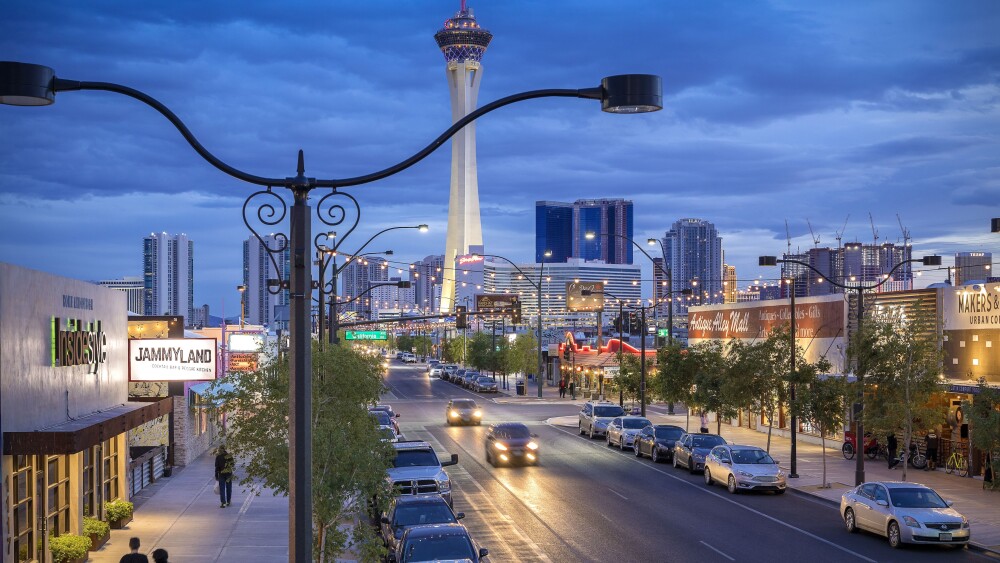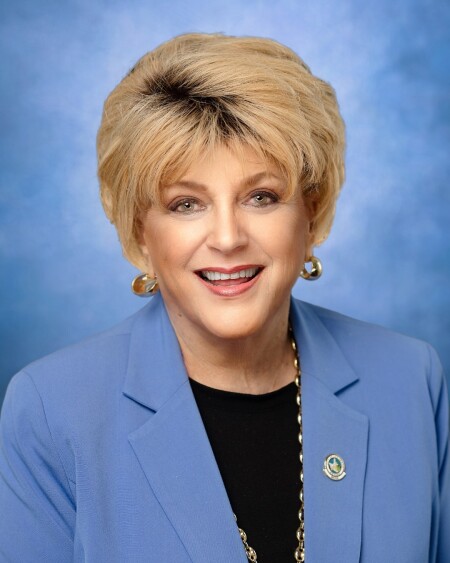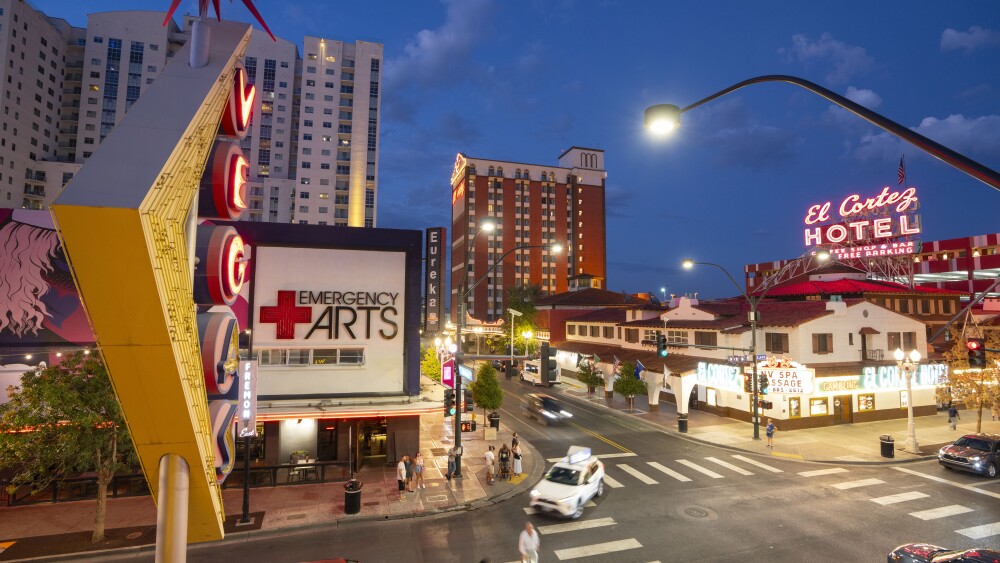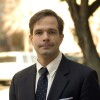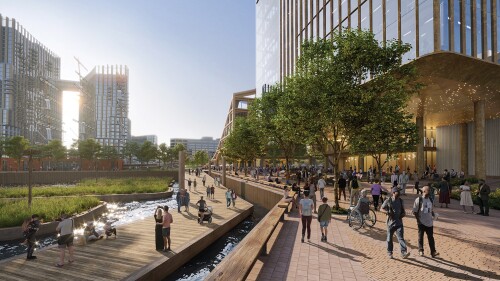Carolyn Goodman has served as mayor of Las Vegas since 2011, winning re-election twice, most recently in 2019 with 83 percent of the vote. Because of term limits, her third term will be her last, ending in 2024.
Her husband, Oscar Goodman, also served three terms as Las Vegas mayor, from 1999 to 2011. Together, the Mayors Goodman have presided over a remarkable transformation of downtown.
Urban Land recently spoke to Mayor Carolyn Goodman about the revival of downtown Las Vegas and what has made change possible.
Urban Land: What was downtown like before you and your husband came to city hall?
Carolyn Goodman: We moved out here as somewhat newlyweds in 1964. With less than 100,000 people, the town still really wasn’t on the map with anything beyond hospitality and the excitement of the Flamingo—and the history.
By 1999 that same downtown had become a deteriorated, boarded-up, drug-ridden shell—people were moving further and further out from the center.
Oscar said, “The downtown is a mess, and I don’t even know where to begin. But the core of the city has to be solid and strong.”
UL: You have talked about your youth in New York City. Did you bring anything from your childhood into what you hoped for downtown Las Vegas?
Goodman: I’m very familiar with New York City, every inch of it. I probably even rode horseback in Central Park. It was obviously a world-class city to grow up in—the center of the world. My husband grew up in Philadelphia, where there was great medicine, great education, great culture, and all of those pieces.
Oscar decided [to enter public service and eventually run for mayor]. He said: “I love this town. It’s really been good to us. And I’d love to see the culture, and the research, medicine, transportation, and sport—I’d like to see that come to Las Vegas.”
My husband made that commitment and worked on it for 12 years as mayor and now I am finishing up my 13th year as mayor.
UL: What strengths did downtown Las Vegas have?
Goodman: When you look at any city, the core of the city is where the government and the banks and businesses are. That’s the hub from which the growth began. There are 400,000-plus vehicles that traverse the downtown on I-15 and I-515 every single day. Everything we’re trying to do is bring those pieces—the culture, and the research, medicine—into where those 400,000 vehicles cross.
UL: What challenges did you have to overcome?
Goodman: Well, you need land. The city of Las Vegas as it’s incorporated is only 155 square miles, In the center, where the heart of the history is, land availability was nil. But there was a brownfield in the heart of downtown from which everything grew in the early 1900s, owned by the Union Pacific Railroad.
The city council and Oscar did everything they could and acquired the 61 acres. It was planned to be the cultural and medical hub and that’s what’s happened. Our Smith Center for Performing Arts is down here. Our museums are down here. We have the research that goes on at the Cleveland Clinic Lou Ruvo Center for Brain Health. It’s become a medical center as well as a cultural area, which drives development.
UL: What has surprised you the most?
Goodman: I guess humanity. Going back to 16 years, maybe 18, maybe 20, maybe even more, it was a very different time when you could get people together. For Carolyn and Oscar Goodman early on—even though our past showed us registered both Democrat and Republican—we became nonpartisans. I think that has really helped create a level of trust that we’re not on one side or the other.
There was a pride, and it still remains. We have it in the city. We probably are one of the most diverse communities in the country, if not in the world. In our school system we have 76 different languages.
There’s no place in the world like Las Vegas, Nevada. It’s a 24/7 town. Go back to New York it closes at 10 p.m. Here at 2:00 in the morning, if you’re hungry you can always get a bite.
UL: When Urban Land Institute members visit Las Vegas, what should they be sure to see? What should they drive past that will surprise them?
I’m sure you wouldn’t think of finding a Frank Gehry-designed building in Las Vegas—the Cleveland Clinic Lou Ruvo Center for Brain Health. Then your people should come to the Fremont Street Experience, and of course to First Friday in the Arts District.
Learn More about Las Vegas development at the 2024 ULI Fall Meeting.
Further reading:
Need for Speed: Formula 1 Is Driving Billions to American Cities
Nevada’s Manufacturing Boom: From Tesla to a New Industrial Frontier

